At the World Travel Market in London on November 7, 2022, an annual report on the Most Visited Destinations revealed the performance of the top worldwide destinations in 2022. The leading nation is the Dominican Republic, while the leading city is Antalya, Turkey.
Between January 1 and October 18 of 2022, the Dominican Republic had 5% more tourists than in 2019. It is followed by Turkey, Costa Rica, and Mexico, all of which received the same amount of tourists. They are followed by Jamaica and Pakistan, both down 5%, Bangladesh, down 8%, Greece, down 12%, Egypt, down 15%, Portugal, down 16%, and the United Arab Emirates, down 17%.
The strong representation of Central American and Caribbean destinations near the top of the list reflects the relative strength of the US outbound market and the approach taken by many highly tourism-dependent countries in the Caribbean and Gulf of Mexico, which, during the pandemic-related restrictions, imposed less severe COVID-19 travel restrictions than elsewhere, thereby maintaining their visitor economies. As the year has gone by, they have strengthened their leading position and begun to surpass their pre-pandemic sales levels.
In addition to the rating, the experts recognized many significant travel trends for 2022. Pandemic-related travel restrictions have been gradually loosened, and pent-up demand for travel has been released, aided by a recent resurgence in corporate travel and big global events such as the World Expo in Dubai and the FIFA World Cup in Qatar. The recovery, however, has not been straightforward. Initially, the extremely virulent Omicron form sparked widespread worry and prompted the reinstatement of travel restrictions at the beginning of the year. Staff shortages, which led to chaos at airports before the start of the summer season, were a further factor retarding the recovery.
The Asia-Pacific area, which has been marked by stricter travel restrictions, most notably China’s “Zero COVID” policy, has begun to recover. There, individuals going to see friends and family have been the driving force, with Pakistan and Bangladesh just 5% and 8% below 2019 levels. The Maldives and Fiji, two tropical island paradises that have seen a decline in tourism of 7% and 22%, respectively, are expected to continue to be popular vacation destinations.
The resurgence has been spearheaded by consumer demand for beach vacations, with corporate travel and city tourism trailing until fall. Additionally, there has been a tendency toward flying in premium cabins, partially fueled by so-called “revenge travel,” which has resulted in increased consumer expenditure on value-added travel services. This condition, along with the rising cost of gasoline, has led to a significant rise in fares.
Although Russia’s aggressive invasion of Ukraine had a significant effect on travel to and from Russia, with several nations imposing prohibitions on direct flights, long-distance travel to Europe has not decreased as much as one would have anticipated before the outbreak. Southern Europe, particularly Greece, Portugal, and Turkey, as well as Iceland, are expected to continue to attract tourists. However, industry analysts are concerned that second-order effects of the conflict, like increased gasoline costs and inflation, may postpone the tourism sector’s recovery.
Antalya, the biggest city on the Turkish Riviera, is expected to receive 66% more tourists in the first quarter of 2020 than it did during the same time in 2019. It is followed by San Jose Cabo (MX), which is up 21%, Puerto Vallarta (MX), which is up 13%, Punta Cana (DO), which is up 12%, San Salvador (SV), which is up 10%, Cancun (MX), which is up 9%, Lahore (PK), which is up 4%, Aruba (AW), which is up 3%, Montego Bay (JM), which is flat, and Islamabad (PK), which is down Antalya’s outstanding success has been aided by several variables, including the weakness of the Turkish lira and the Turkish government’s stance of remaining relatively open to tourism throughout the epidemic and continuing to welcome Russian tourists.
Olivier Ponti, VP of Insights, said: “Looking at the world on a regional basis, one must admire Caribbean countries for their early efforts to sustain visitor arrivals in the face of the pandemic and their continued growth in an increasingly competitive travel landscape. The Middle East also stands out, as it has helped to accelerate its recovery by hosting major global events such as the Dubai World Expo, Formula One Grand Prix in various Gulf locations, and, above all, the FIFA World Cup in Qatar. The Gulf has also seen a relatively robust comeback in business travel, a segment whose recent revival has come as a surprise to many.”











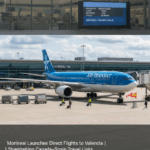

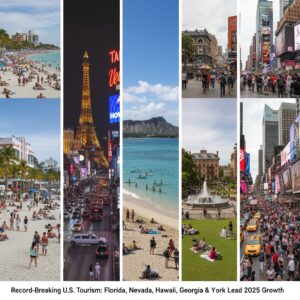
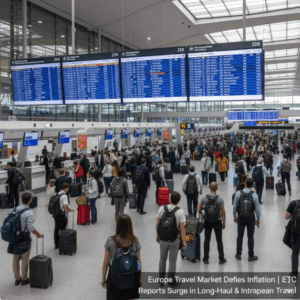
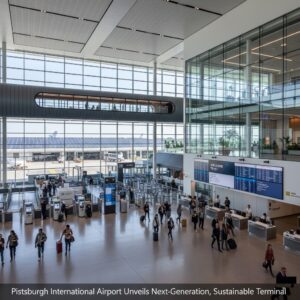
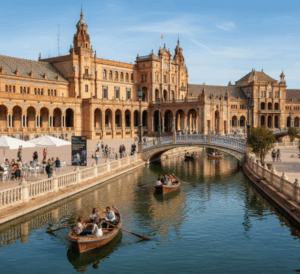
More Stories
Florida Joins Nevada, Hawaii, Georgia, and New York in Driving Record-Breaking Tourism Growth in the United States
Europe Travel Market Defies Inflation: ETC Data Highlights Surge in Long-Haul and Intra-European Trips
Seville Shines as a Top European Destination for 2026 with Perfect Blend of History and Innovation